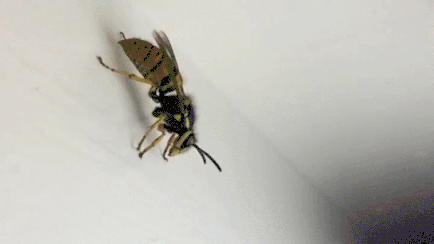What to do if you are bitten by a bee or wasp: guide

Insect bites and bites are painful conditions associated with insect bites (mainly Hymenoptera and Diptera).
Sting is a common name for a pointed organ or part of the body of various animals and plants used to inject a poisonous or burning substance under the victim's skin (sting) or to apply an electric shock. The sacrificial tissue is pierced by the staple's own movements, unlike other organs, for example teeth that use the force of jaws or thorns that use the victim's movements.
Hardly bee venom can cause you a lot of problems, but it will ruin the day for sure. See how to act to minimize the consequences.
You must know that when you bite a bee, you first have to remove the sting. And that's why: "There is a cavity with poison in a sting, so the faster you remove it, the less poison will get into your blood," explains Reshma Patel, an employee of the emergency department at the Langone Medical Center at New York University. According to a study conducted at the University of Arizona (USA), more than 90% of the poison from the stings of the bee gets into the blood within 20 seconds after the bite.
So try to remove the sting as soon as possible. You can use the edge of the credit card, the tip of the knife or tweezers. Nail, in the end. But whatever you use, be careful: first, do not squeeze even more poison out of the sting, and secondly, do not bring the infection into the wound. After you remove the enemy shell, wash the place of bite with soap and water. If the place of the bite burns, and the redness and swelling persist, apply ice to it for 20 minutes to slow the reaction. In most cases everything goes for a couple of hours. If you want to speed up the process a little, doctors are advised to lift up that part of the body into which you were bitten. This causes an outflow of blood, and the swelling subsides.

And the last step: spread the bite with anti-inflammatory, antipruritic cream (ask at the pharmacy). Well, if you are allergic to such cases, then you can not do without antihistamine. Important: It is necessary to be especially cautious with bites to those who have anaphylactic shock: if the organism reacts sharply to one allergen, then it can react to another, in this case bee venom. Signs of a serious allergic reaction are swelling of the throat, tongue or eyes, difficulty breathing, nausea, vomiting or diarrhea, dizziness and loss of consciousness.
Via mhealth.ru


Comments
When commenting on, remember that the content and tone of your message can hurt the feelings of real people, show respect and tolerance to your interlocutors even if you do not share their opinion, your behavior in the conditions of freedom of expression and anonymity provided by the Internet, changes Not only virtual, but also the real world. All comments are hidden from the index, spam is controlled.